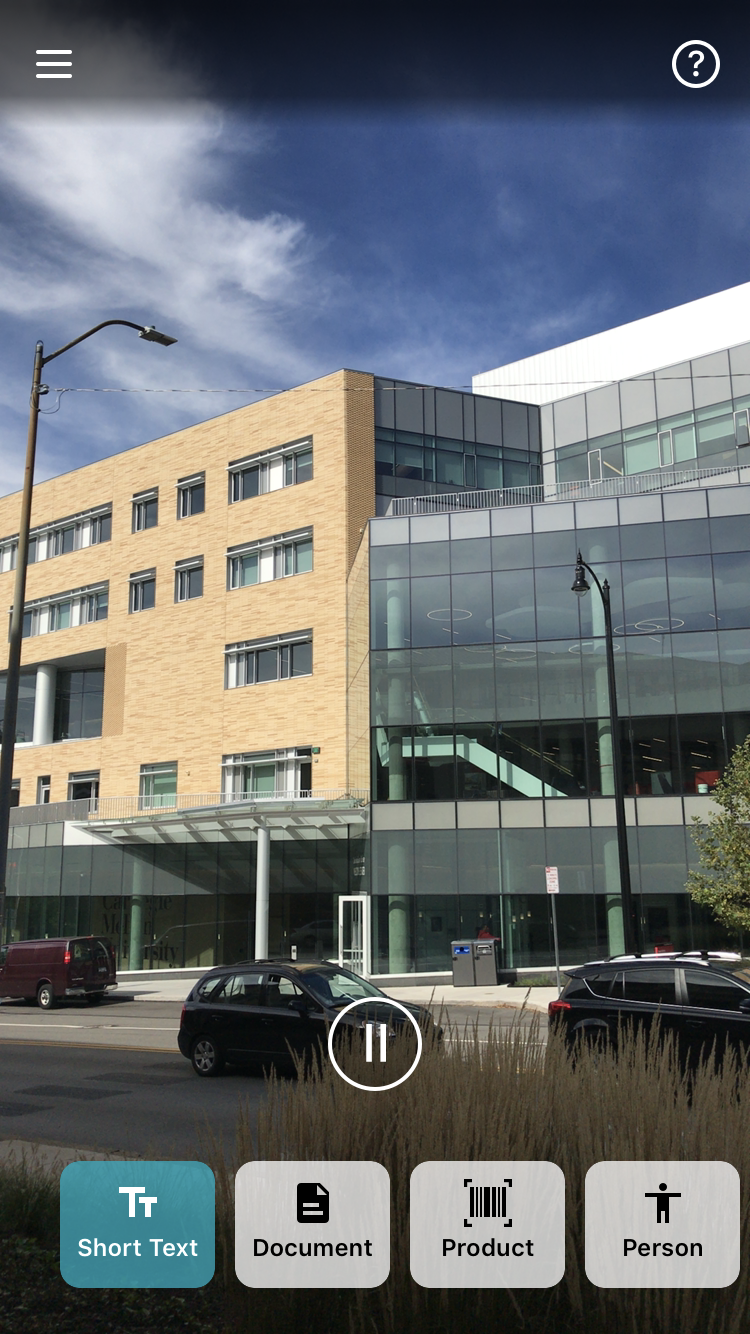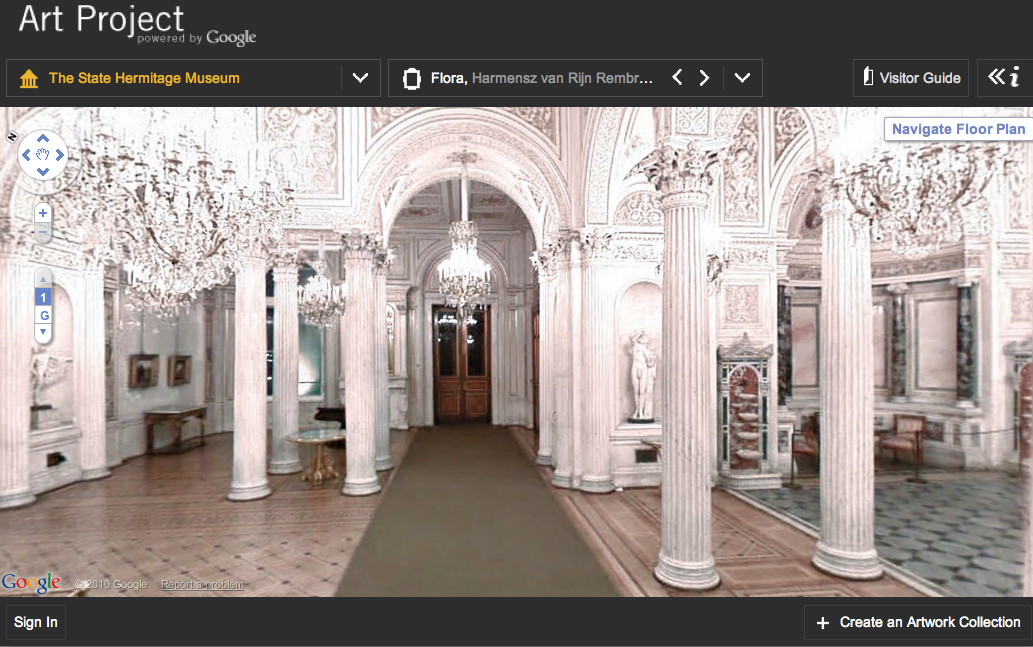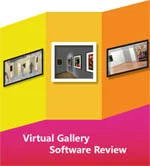‘Seeing AI’ is a free iPhone app designed to aid low-vision individuals in understanding and navigating the environment around them. The app’s software integrates use of the built-in camera to recognize people, specific items, or a general environment around the user.
Online Tools to Test Website Accessibility
A recent NTEN article provided a list of free online tools to help nonprofit organizations test their websites for accessibility. These tools help to ensure the features and content on a website can be experienced by persons of all abilities. Today I take a closer look at one of the tools listed, WAVE, and review another option not included in the report, AMP.
How Google Art Project Benefits the Public
How many of you have ever imagined being able to see artwork in the greatest museums around the world without leaving your chair? Driven by his passion for art, Amit Sood developed Art Project to let people do just that. The Google Art Project includes various museums from nine different countries, which provides people an access to artworks worldwide. It’s not uncommon, many people and organizations began to think about “online museums” years ago. However, I found two important features, which I rarely notice on other similar websites, that differentiate Google Art Project from others-----the extremely high pixels (10 billion) and the collection button.
image 1
(Image 1)
Some people wondering what could we get from 10 billion pixels? Google Art Project’s pursuit for an extremely high pixel count for each piece ensures audiences have a high level of exploration experience for artworks. For instance, the Harvesters, painted by Pieter Bruegel the Elder in 1565, gives you a general view on the artwork at the first glance (Image 1). Gradually, you will probably be curious about several detailed part of the paintings. What are people doing in the triangle 1 and triangle 2 areas (Image 1)? As you zoom in triangle 1 area, you will clearly see expressions on each person’s face (Image 2). Then you will really want to look deeply. As you start playing around, you will find something going on over there in triangle 2 area. As you zoom into the triangle 2 area, you will find that the artist depicted a scene of kids beating something (Image 3). Apparently, it seems to be a quite popular game. After I did a little research on Google, I found this was a game called score which involves in beating the goose with sticks. You see, I learned something from the exploration process for the painting.
image 2
(Image 2)
(Image 3)
This high standard of pixels also enables people to observe the details about brush strokes and to see how an artist actually creates the masterpiece. As I deeply go to the favorite part of the painting Starry Night painted by Van Gogh. Interestingly, as I zoomed in, the cracks noticed seemly closer the distance between Van Gogh and me. I've never gone into the Starry Night like this before.
Another amazing feature of this project is the collection button. This button enables any one of us to create our own museums online by creating our own collections out of all these images. Moreover, you can introduce your museum to your friends via sending an email and really get a conversation about what your feeling is when going to these masterpieces.
Additionally, we also see some potential values of this project for the arts education field. This could be a great tool for arts teachers to better get to the interpretations of interesting details of the masterpiece in class. For now, the Google Art Project seemingly performs well at a technical level. However, from a management perspective, some people doubt its problematic execution. Another concern is if the implication of Google Art Project is that in the future there will no longer be any need to visit a museum. This is not our focus of this post, but we are curious about your opinion about this project. Leave a comment below!
Everybody's talking about Google Art Project
Is Google Art Project setting a new standard for the online art world, or is it all just hype? Since its release a few days ago, the public has taken its first stroll through the project’s virtual galleries and in general, first impressions have been enthusiastic.
Birth of Venus
"The Birth of Venus" by Sandro Botticelli. Uffizi Gallery, Florence via Google Art Project
Arts lovers are all abuzz about its fabulous image quality, its accessibility to broad audiences, and its educational potential. While it is too early to tell how much of an impact Art Project will actually make on museums and the art world, the collaborative spirit and innovative technology of the site shows great promise.
For the past 18 months, Google has collaborated with 17 world-class museums to create "Street View"-style tours of their permanent collection galleries. While “walking” around a gallery, a virtual museum-goer can zoom in on any one of 1000 artworks. Many of these images are also accompanied by information such as descriptions of the work, artist biographies, links to more in-depth coverage on the museum’s website, and even some informational videos.
The Hermitage Museum via Google Art Project
The State Hermitage Museum, St. Petersburg, Russia via Google Art Project
Even better, one artwork per museum is available in “gigapixel” resolution of up to 14 million pixels so that you can zoom in almost microscopically close to the canvas. This allows for an intensive scrutiny of artwork that has not been previously available online.
In addition, visitors have the option to curate their own virtual collections, including details that are captured by zoom, and comments about the art. These collections can be shared via Facebook, Twitter or embedded link. It’s free, but you’ll need to sign in to a Google account to create your own collections.
Navigating through the virtual galleries can be mesmerizing. Personally, I loved the feeling of revisiting those museum galleries that I hadn’t been to in years. It was a truly moving experience to be able to unlock those visual memories. And for those museums that I haven’t yet visited but have always wanted to see, it was great to get a taste of what visiting might actually feel like.
The Street-View technology at times can be quite cumbersome and frustrating. Often, I found myself stumbling around, bumping into invisible walls, fruitlessly clicking away and trying to back myself out of corners. In addition, the image resolution of the navigation tool can be fuzzy, especially in contrast with the images of the artwork itself.
Starry Night
The “gigapixel” technology is jaw-dropping, and it feels so much more intimate than your run-of-the-mill online image. As Nancy Proctor and Julian Raby of the Smithsonian point out, "to engage with the work of art in this way transforms the web experience from an informational one to an emotive one.” I imagine, and hope, that these super high-resolution images will someday become ubiquitous in online museum collection. While not a substitute for seeing the art in person, these images are breathtaking in their own right. Detail of "Starry Night" by Vincent Van Gogh. MOMA via Google Art Project
Many pieces in the galleries are blurred out due to copyright issues. While this is understandable, it can also be distracting. Furthermore, most of the museums offer very few actual galleries to explore. MOMA, for example, has just one gallery and the lobby. And the lobby doesn’t have any art that is actually visible or accessible to the viewer. Over at Art21, guest blogger Kevin Buist has some interesting thoughts about the uncanny effect of seeing so many doorways into other galleries that in fact are blocked by those invisible walls.
It’s an impressive debut, despite its flaws. Perhaps most exciting is its collaborative approach to making museums accessible to new audiences around the world. While virtual gallery tours have been offered online before, they have existed in isolation from one another. Art Project brings them together in a visually stunning way, where curious users can wander around museums that they didn’t even know existed.
Some have criticized that Google is cherry-picking the museums involved and therefore curating its artistic content, but I would counter that they had to start somewhere. If the Art Project is successful, doubtless they will need to grow their museum roster, especially to include non-western museums. And I suspect that some of those navigational kinks can be worked out over time as well.
It remains to be seen if the Art Project will truly be able to sustain audiences over time, but I hope that it can. Anytime art can reach new audiences in innovative ways, I think that it’s cause for the art sector to celebrate.
Now available: Virtual Gallery Software Review!
Technology in the Arts just released a publication reviewing virtual gallery software for artists and arts organizations interested in creating 3D virtual exhibitions. Access the PDF publication here. The publication reviews three online gallery systems: Virtual Gallerie, Image Armada, and Scenecaster / 3D Scene. Which one is best for your organization? Check out the publication to find out which virtual gallery software meets your needs.
This research was initiated by the CUE Art Foundation, which sought to find an existing software system that will allow artists to create and display virtual exhibitions easily.















